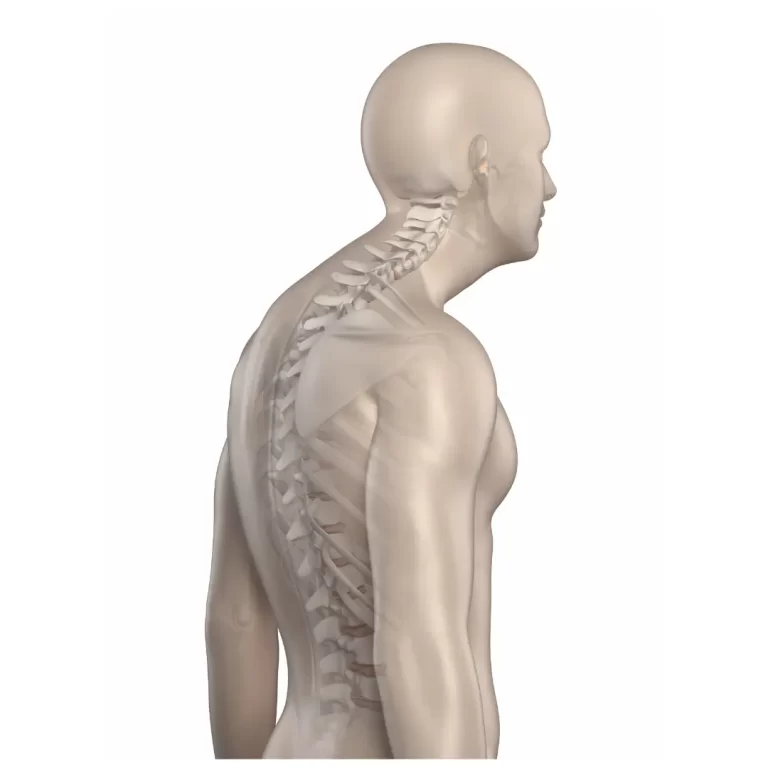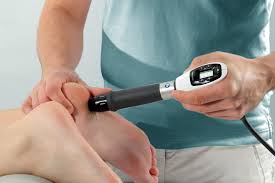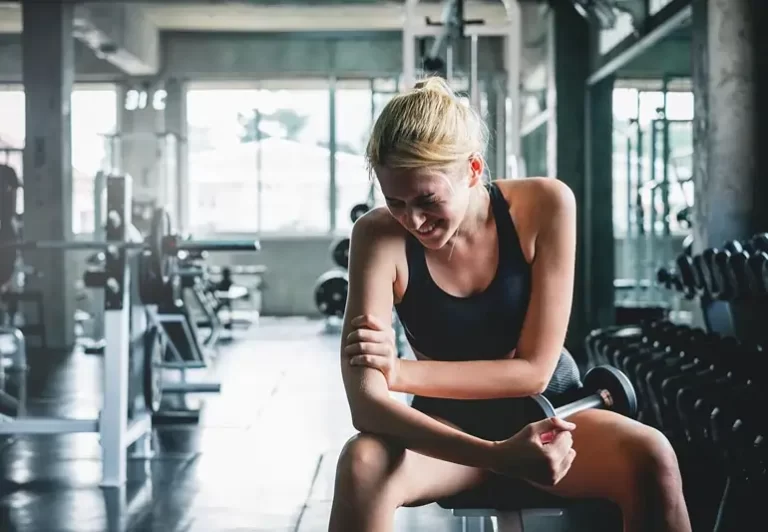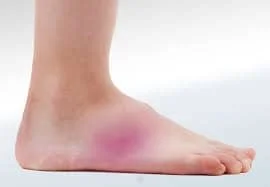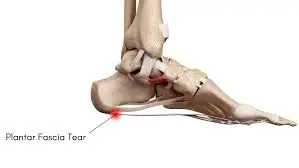Knee Pain When Squat: Cause, Treatment, Exercise
Knee pain when squatting is a typical issue among those who do strength training exercises. Squats are a popular exercise among athletes, powerlifters, bodybuilders, and other physically active people because they are extremely successful at increasing lower-body strength, muscular mass, and general athleticism.
The source of the pain may be under your kneecap or in other parts of your joint.
When I squat, why do I have knee pain?
Considered as the foundation of lower body growth, squats are an essential strength training exercise. Athletes, those interested in fitness, and people wishing to gain strength or improve general fitness often use them because they target different muscular areas, such as the quadriceps, hamstrings, and glutes.
Squats, however, might cause aggravation and pain for certain individuals because of knee problems. You’re not the only one who has had knee pain when squatting.
Chronic knee pain that hurts when squatting may indicate problems with your cartilage, knee cap, hip flexors, or other components. Our bodies are capable of squatting without any pain or strain. When we bend our knees, muscle power, flexibility, and alignment are all involved. These elements and issues may apply pressure on the knee joint, resulting in pain and swelling.
Realizing your body’s limitations is necessary for any physical activity. Squatting may not be the direct cause of knee pain in some medical problems, but it can increase the chance of getting into trouble in the future.
Although it may not be the primary cause of knee pain in certain musculoskeletal disorders, squatting can raise the risk of developing pain over time.
This post will discuss the common causes of knee pain during squats, provide prevention advice, and explain when obtaining medical attention is necessary to ensure pain-free squatting.
What Can Cause Pain in the Knee When Squats?
It’s important to recognize the underlying reasons for knee pain during squats to treat and prevent pain.
When squatting, the following are some typical reasons for knee pain;
Squatting Incorrectly:
- Knee pain can worsen if you squat incorrectly.
- The knee joint may be severely strained during a deep squat if the hips, knees, or ankles are out of alignment.
- This pressure causes the patella and femur to frequently hit with one another.
Techniques that work well include;
- Knee distance should measure hip width.
- Ensuring that your weight is properly distributed.
- Focus on your upper body and knees.
- Maintaining good posture is important when using weights for exercise.
Overuse:
- Exercising overly or too frequently without allowing your body enough time to rest might cause this condition.
- In addition to other body parts, it can lead to weariness, pain, and inflammation in the knee.
Not Enough Time to Warm Up:
- If you skip a proper warm-up, your muscles and joints won’t be as prepared for the demands of squats, which increases your risk of developing knee pain.
- To effectively treat your knee pain during squats, you have to identify its exact source.
- The first measures in preventing and treating knee pain during squats are often correct form, proper warm-ups, and fixing muscle imbalances.
Imbalanced Power:
- Incorrect patella (knee cap) movement may be caused by severe muscular imbalances between the inner and outer thigh muscles or the quadriceps and hamstrings.
Past Injuries:
- You may be more likely to have knee pain during squats if you have previously had knee problems such as meniscus damage or ligament tears.
Weak Muscles:
- When performing squats, knee pain may be worsened by weakness in the quadriceps, hamstrings, and glutes.
- If these muscles are unimproved, they might not be able to provide the necessary stability and support, which could put additional strain on the knee joint.
The patellofemoral syndrome :
- Kneecap position and movement issues are associated with the runner’s knee, commonly referred to as patellofemoral syndrome.
- Knee pain during squatting leads to the degeneration of the cartilage on the back of the kneecap.
- The most common signs of a runner’s knee are clicking, redness, and soreness.
- After squats, the amount of strain on the joint and a lack of synovial fluid aggravate inflammation and knee pain.
Patellar Tendonitis:
- An injury to the tendon directly below the kneecap is known as patellar tendinitis, which is another term for jumper’s knee.
- Inflammation and tears in the tendon are caused by the continuous force that jumping, kicking, and other sports apply to it.
- In turn, this puts more strain on the tendon and makes squatting extremely painful.
Osteoarthritis:
- Osteoarthritis is a kind of arthritis that is highly common.
- It appears as a degeneration of the cartilage covering the ends of bones.
- Typical signs of this illness include inflammation, stiffness, pain, and bone spurs.
- Squatting causes the cartilage to contract, raising the force of friction between the bones.
- Knee pain is the main reason why most older individuals find it difficult to squat.
Tear in Cartilage:
- Meniscus tears are among the most common injuries that result in knee pain during squats.
- Damage to the cartilage surrounding the knee joint is the reason behind knee pain after squats.
- As the knee flexes, the cartilage acts as a shock absorber.
- However, as a result of increased pressure from cartilage degradation, the knee experiences severe pain and inflammation.
- Meniscus tears can cause locking sensations and intense pains.
Limited range of motion in the ankles:
- In the body, everything is interrelated.
- If you can’t bend forward or side to side with your ankles, you might have to force your knee into a more challenging posture.
- This will ultimately alter the angle at which your knee bends.
- Ankle range of motion can be improved with an easy at-home workout
Too little activity during the day:
- Prolonged standing or sitting can cause your joints to become irritated and stiff.
- Throughout the day, there is no right or incorrect way to stand or sit.
- All you need to do is make sure you occasionally shift positions and move around.
Possible signs and symptoms:
Pain in the front of the knee
- Patellofemoral pain syndrome, commonly referred to as runner’s knee, is frequently the cause of this. This is the result of constant pressure or friction irritating or damaging the patella, the cartilage below your kneecap.
- Particularly when you kneel, squat, run, or climb stairs, you can get pain in the front of your knee.
- In your knee, you might also hear popping or clicking noises.
- Your ability to walk, jump, or sit may be impacted if you have to bend or extend your knee during these activities. It may also increase the likelihood of an injury or irritation to your knee.
Pain behind the knee
- A hamstring strain or a Baker’s cyst is frequently the cause of this. You can tear or overstretch the tendons or muscles in the back of your thigh, resulting in a hamstring strain.
- The back of your knee may hurt and swell, particularly when you run, kick, or squat.
- Additionally, you can have trouble bending or straightening your knee.
- This may impair your balance, coordination, and knee’s range of motion and stability.
A pain radiating from the outside of the knee
- Both meniscus tears and iliotibial band syndrome are common causes of this. The thick band of tissue called the iliotibial band, which extends from your hip to your knee, can become tight and rub on the outside of your knee. The syndrome is referred to as iliotibial band syndrome.
- The outside of your knee may hurt and swell, particularly after a downhill run, bike ride, or squat.
Sounds that click or pop
- Additionally, your knee may make snapping or clicking noises.
- This may have an impact on your strength and flexibility as well as the alignment and stability of your knee. It may also increase the risk of bursitis or arthritis in your knee.
Knee pain when bending or straightening
- A major injury or condition affecting the knee joint or surrounding tissues may be indicated by difficulty bending or straightening the knee.
- A portion of cartilage called the meniscus helps to cushion and facilitate smooth movement of the knee joint.
- When the knee is violently twisted or bent, as happens in sports or accidents, a meniscus tear may result.
- When flexing or extending the knee, in particular, a torn meniscus can cause pain, edema, stiffness, and locking or clicking in the joint.
Considerations and proper squat technique:
Pre-workout stretching can help lower the chance of injury. Older people should warm up their bodies since their muscles become less flexible and more prone to breaking down with age.
To warm up, utilize activities that mobilize the joints while improving the flow of blood and oxygen to the muscles, such as marching in place. Another way to lower the risk of strain or injury is to stretch your legs both before and after an exercise.
To properly squat;
- Begin by standing up.
- As you release breath, maintain your feet shoulder-width apart, bend your knees, and pull your buttocks down as if you were ready to sit down.
- Stretch your arms wide to keep your balance.
- Make sure the heels stay firmly on the ground.
- Only lower as low as is safe without creating pain, and always keep the buttocks above knee level.
- Maintain your thighs parallel to the ground.
- Make sure the back stays straight and neutral.
- Check that all of your toes, knees, and hips are pointed forward.
- Take a deep breath, push into your heels, and keep your hips tight to stand back up.
- Then relax.
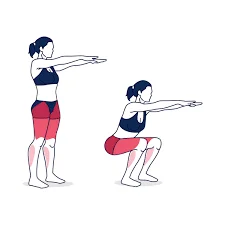
Diagnosis:
If using home treatments to relieve your pain doesn’t work, schedule an appointment with your doctor. You’ll probably be questioned regarding your medical history and injuries, including:
- When did the pain first begin?
- Whether it’s constant or irregular?
- Which activities cause the most pain?
- If you’ve recently experimented with any new activities?
- If you’ve recently increased the intensity or duration of your training?
- If you’ve switched the surfaces you use for running or sports?
Additionally, a physical examination will be performed so that your physician may assess your range of motion, swelling, grinding, and other symptoms.
To find out which postures hurt the most, they could ask you to walk, bend, or do other exercises involving your knee.
Your doctor might advise an X-ray or other imaging tests to look under the skin. When a kneecap is displaced, an X-ray can show it or help more serious disorders including knee fractures.
Treatment:
The underlying reason and degree of pain in the knees during squats determine the course of treatment.
The following are some typical methods of therapy that can help reduce knee pain;
Rest and Healing:
- When doing squats, the first thing to do if you experience significant knee pain is to take it easy and allow your knees to heal.
- You can give your body more time to heal by resisting any actions that make it worse.
Using the RICE Protocol:
The four components of the popular RICE treatment are rest, ice, compression, and elevation.
- Rest: Avoid any activity that can make your knee pain worse.
- Ice: To reduce pain and swelling, apply an ice pack to the affected joint for fifteen minutes.
- Compression: To help in the lowering of edema, put a compression bandage around the joint.
- Elevation: Elevate your knee over your heart by resting it on some pillows.
Medicines that Reduce Inflammation:
- The use of non-steroidal pain relievers and anti-inflammatory medications may help in the reduction of significant knee swelling and pain.
- Both legally prescribed medications and physical activity can help you become more adaptive.
- Depending on the cause and severity of your knee pain, you may need to rely on medication until your body is ready for exercise.
Physical Therapy:
- Physical therapy has the potential to significantly reduce knee pain experienced during squats.
- Since physical therapy helps to strengthen the muscles surrounding the knee, promote flexibility, and improve knee joint function, it’s a great safe option for older adults who want to improve the health of their knees.
You can learn various physical therapy exercises and strategies from your physical therapist that are intended specifically for dealing with knee pain. These could consist of;
Strengthening Activities:
- Exercises that specifically target the quadriceps, hamstrings, and glutes may help in knee stabilization.
- These exercises are also helpful in improving balance, flexibility, and posture.
- Common workouts include leg raises, hamstring stretches, knee bends, and thigh contractions.
- Find out what strengthening activities you can do based on the severity of your knee pain.
Mobility and Stretching Exercises:
- Exercises that stretch the knee region’s muscles and tendons can improve flexibility and release stress
- Stretching is recommended for the IT band, hamstrings, and quadriceps.
Footwear with Knee Support:
- Some people may find that braces or knee wraps provide them extra support.
- When doing squats, wearing correct footwear such as shoes with enough arch support can help keep the knee alignment straight.
- When doing squats, always listen to your body and don’t push through the pain.
- Exercise while in pain may be even more harmful because pain is a sign that something may be off.
- If you have chronic or severe knee pain when doing squats, please consult a professional for a proper diagnosis and effective treatment plan.
Exercise:
Here are some alternative workouts that can improve your lower body strength and flexibility and are typically easier on the knees.
Lunges
Lower body strength and improved knee alignment are two benefits of lunges. While you go forward, backward, or to the sides, concentrate on maintaining a stable core and proper knee tracking.
- With your feet hip-width apart, take a comfortable standing posture on the floor.
- Take a step forward that is longer than usual when walking to place one leg in front of the other.
- Your foot needs to remain flat on the ground when it hits it.
- Next, lower yourself while bending your knees to a 90-degree angle.
- Keeping your core straight is essential.
- Maintain your posture like this for a short while.
- Return to the beginning position by slowly raising your front leg.
- Then relax.
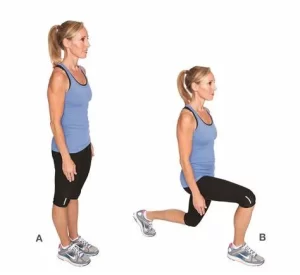
Calf Raises
Having strong calf muscles will improve knee support. Elevate and lower your heels while standing on the edge of a step or platform to strengthen your calves.
- The elevated step calf raise involves standing on the edge of a step or platform with your heels hanging off the edge.
- To raise your body higher, gradually lower your heels until you feel a stretch in your calves.
- Then, push up onto the soles of your feet.
- The elevated step variation can help you develop stronger and more toned calves since it extends your range of motion and puts additional pressure on your muscles.
- Then return to your neutral position.
- Then relax.

Bodyweight Glute Bridges
Bridge exercises that target the glutes are an excellent way to strengthen the posterior chain without overtaxing the knees.
- Legs bent lie flat on the floor.
- Press through your heels to raise your hips as high as possible.
- Verify that your hips and shoulders are parallel to one another.
- Keep your abs squeezed in and tighten your glutes.
- By doing this, you won’t put too much strain on your back.
- Hold this position for a few seconds.
- Then return to your neutral position.
- Then relax.
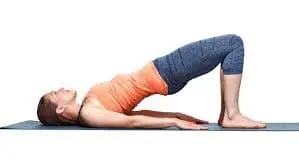
Wall Sits
Wall sits provide an isometric workout that strengthens the quadriceps without requiring any knee flexion. Simply bend down against a wall and hold that position for a specified period.
- To begin, place your back against a wall and place your feet shoulder-width apart, about two feet away from the wall.
- Sliding your back down the wall until your thighs are parallel to the floor requires you to contract your abdominal muscles.
- Instead of putting your knees over your toes, place them squarely over your ankles by adjusting your feet.
- Maintain a flat back against the wall.
- Hold this position for a few seconds.
- Return to a standing position by carefully sliding up the wall.
- Then relax.
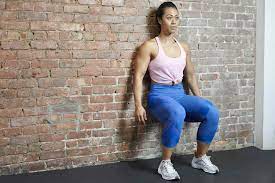
Box Squats
You sit back down on a box or bench and then stand back up in a box squat. This variation reduces the risk of knee pain by improving control and alignment.
- The ideal distance to place a plyometric box behind the squat rack is three feet.
- This gives you plenty of space to squat comfortably without worrying about the bar hitting against the rack.
- To practice the right form, start with one extremely lightweight bar.
- This is a lower-impact exercise than a standard squat.
- Then, take a step below the bar and place it so that it rests on your upper back rather than your neck.
- Your shoulders will produce naturally developed abilities where the bar seems to be set.
- Make sure your toes are wider than your shoulder length.
- Take a step back so the box is directly behind your feet after unracking the weight.
- Maintain a strong core and wide feet with slightly pointed toes.
- When you lower your body with control to the box, release your hips and flex your knees.
- As you drop until you are sitting, maintain your center of mass (weight) over your feet.
- To maintain your knees in line with your feet when you lower yourself, consider slightly pushing them out.
- You can sit on the box for one or two counts, but to maintain the weight-bearing, keep your trunk upright and moving.
- Then, as you push yourself forward and tighten your hamstrings and glutes to lift, gently flex forward at the hips.
- Go back to your standing position.
- Then relax.
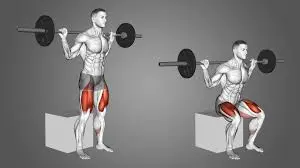
Step-Ups
Step-ups and other exercises done on a bench or platform may be easier on the knees than squats. They engage the glutes, hamstrings, and quadriceps while supporting good knee alignment.
- A small step stool is required for step-ups or you could take a position in front of the staircases.
- Raising your body onto the step, push mostly with your lead foot.
- After that, take a step back to where you were before.
- Maintain a straight back and tight abdominal muscles when performing step-ups.
- Verify that your foot is fully placed on the step.
- Then return to your neutral position.
- Then relax.

How to Avoid Knee Pain When You Squat:
The goal is to be active in whatever method suits you best if you want to maintain strong, healthy knees for the rest of your life. Here are some particular tips for making sure that your exercise builds strong, flexible knees so you can avoid knee pain when performing squats.
An ideal range of motion for the knee:
- When we talk about reducing knee pain, we usually talk about increasing range of motion. The child’s pose and the knee-to-chest stretch are great places to start.
- They apply little to no weight, yet they stretch your knee to its maximum potential
- By doing so, you can increase your confidence in bending your knees further during exercises like squatting.
Develop stronger hip muscles:
- When we offer people hip exercises, they sometimes become better able to activate their hip muscles and adjust so they can get some pain relief.
- Some people, on the other hand, naturally perform a highly knee-dominant squat, meaning they are very upright and just not used to activating the hip muscles.
- Additionally, often all it takes to make a significant difference is to simply become more aware of how your muscles are being used and moved.
Remember the mobility of your ankles:
- Improving ankle mobility helps in maintaining the ideal alignment of your knee as your ankles and knees cooperate to move your legs.
- Try performing exercises like ankle pumps, which involve frequently moving your foot toward and away from your pelvis to help loosen up and expand the range of motion in your ankles.
- You can perform this exercise while watching TV, while in line at the grocery store, or while seated at your desk at work.
If necessary, modify your squatting technique:
- It’s important to understand that there is no such thing as a “perfect” squat because everyone’s bodies are different.
- If your squatting technique isn’t working for you, though a physical therapist can help you figure out whether that’s the case you might want to try modifying it, whether it’s at the gym or when picking up objects off the floor.
Reduce weight:
- An increased weight load during weight-bearing activities, such as squats, can put additional strain on the knee joints, therefore aggravating pain and stiffness in the knees.
- Reduced squat and knee strain can be achieved by the use of a comprehensive body weight control program that includes regular exercise and a healthy diet.
What Should You Do While Squatting If You Are Having Knee Pain?
Stop and Rest: Stop the squat workout right away if you experience any pain. Ignoring pain and pushing through could make things worse.
Evaluate Your Form: Pay close attention to your squatting technique if you have pain in your knee when bending and squatting. A good position for your feet, alignment of your knees with your toes, and perfect form are all important considerations. Knee pain may be caused by poor form.
Make Sure You Warm Up Enough: Before squatting, make sure you warm up properly. Warm joints and muscles are less prone to damage and are more flexible. Resistance bands and/or light cardio can be used for this.
Ice and Rest: To help with pain relief and inflammation reduction, apply an ice pack to the affected area. Before attempting squats once more, give your knees some time to rest and heal.
Think About Expert Advice: See a trained expert if the pain continues. They can evaluate your condition, offer advice on safe exercise methods, and, if necessary, suggest a rehabilitation schedule.
Stop Overtraining: Allow your body enough time to rest in between squat workouts. Excessive training may worsen painful muscles and raise the possibility of injury.
Pay Attention to Your Body: Observe the signals that your body is sending you. To rule out more serious conditions, you must get professional guidance if the pain continues or gets worse.
Summary
Although squatting is an excellent way to strengthen your core and lower body, if you do it carelessly, you may end up with knee pain. Knee pain can make squatting harder, weaken your muscles, and limit your range of motion. Moreover, it could lead to more serious problems like inflammation, cartilage deterioration, or tears in the ligaments.
Squat-related knee pain is a prevalent problem for a variety of possible reasons. To manage it, give proper technique top priority, work on strengthening your supporting muscles, and think about doing other exercises. Always pay attention to your body, get help from a professional if necessary, and stay dedicated to your fitness objectives while keeping your safety and well-being in mind.
Squat knee pain is a frequent issue that can afflict individuals of many different ages and fitness levels. It could make it challenging to enjoy physical activities or perform our everyday duties.
Understand that building knee strength for squats is a gradual process that requires endurance. If you are not prepared, do not attempt heavy lifting right away since this could result in harm. To maintain long-term knee health and success in your squatting activities, prioritize proper form and concentrate on making progressive advantages.
FAQ:
Do squats harm knee cartilage?
A deep squat also puts a lot of pressure on the meniscus cartilage, which acts as the elastic shock-absorbing cartilage between the two bones. With time, these delicate and important knee structures can become damaged (years for some, one squat for others).
How do I make the cartilage in my knee stronger?
The following steps can be taken to maintain and support healthy cartilage in the knees:
Exercise Daily
Strengthen Your Knee Muscles
Keep a Healthy Weight
Healthy Diet
Maintain Hydration
Stay away from high-impact activities
How can I reduce my squatting-related knee pain?
To relieve knee pain during a squat;
Examine and adjust the way you squat.
Build up the muscles in your legs.
Take care of any muscle imbalances.
Warm up and stretch correctly.
Think about exercises that are easy on the knees.
Consult a physician if the pain continues.
When I have knee pain, should I still squat?
Yes, most likely, is the response! Even in cases where squatting causes pain or discomfort, it can still be a beneficial exercise for strengthening muscles and managing joint pain. Increase the frequency or level of your squats progressively by starting slowly. See a physical therapist if you’re experiencing knee pain, limited mobility, or strength issues. When it comes to improving strength, flexibility, and mobility, they can diagnose the musculoskeletal problems causing your pain and create specially designed workouts to target those areas.
How can I treat my knee pain after squats?
To avoid knee pain, people who squat as a part of their exercise routine or during daily activities should be sure they are doing it correctly. Using a cold compress, bandaging the knee, taking pain medication, resting or modifying one’s activities, and so on can all help reduce pain.
Are squats unsafe for the knees?
When done properly, squatting is good for your knees and can strengthen the muscles that support them, lowering your risk of suffering a knee injury. Squats are a good idea, but if you have knee pain, you should see your doctor first to rule out other possible causes and get treated if necessary.
Does walking help with knee pain?
Walking strengthens your muscles, helping them to support more of the weight and relieve strain on your joints. It means that your knees will hurt less. helps with weight loss.
What causes pain following squats?
A common cause of squatting pain is poor form and too much weight. You may also have pain if you have weakness in your core muscles or limited range of motion in your hips and ankles. Back pain may be a sign of an underlying injury. Certain injuries require medical attention.
In what number of squats a day?
A fantastic technique to begin developing strength and endurance for beginners is to perform 20 squats per day. However, you will need to progressively increase the amount of squats you perform over time if you want to see more noticeable benefits.
After squats, is knee pain common?
Knee pain can result from squatting if you have weak gluteal muscles. The support and equal distribution of force across the knee joint is significantly supported by your glutes. Ankle pain and inflammation might arise from overexerting the knee due to weak glutes
Could we squat every day?
You may easily include the movements into your routine, which is one of the many benefits of practicing it.
Why is the squat better?
Squats work many joints and are a complex exercise for multiple muscle groups. Your calves, quadriceps, hamstrings, glutes, core, and an area of your back are worked as you squat. Overall, a squat is beneficial.
Why does squatting cause my knees to crack?
You may have suffered crepitus if your knees have ever “snapped, crackled, and popped” when you move. It is common in all of the body’s joints. Though it can be troubling, the sound usually isn’t cause for anxiety, so you shouldn’t be afraid to move or exercise on your knees. Movement is essential to our joints’ health because it keeps them maintained So, it’s better the more you can move around.
Why does squatting down hurt?
Knee pain during squats can be increased by incorrect stance or posture. When the hips, knees, or ankles align incorrectly during a deep squat, the knee joint can experience considerable strain. The patella and femur rub against one another repeatedly as a result of this pressure.
Can knee arthritis be relieved by squats?
Include squats in your exercise program as long as you can perform the exercise with little to no pain in your knee joints. Squatting against a wall can help lower your chance of applying incorrect or unnecessary stress to your knees, which may be especially beneficial for people with arthritis.
What kind of workout is a squat?
A squat is a strength training exercise where the individual performing it stands up, lowers their hips, and then stands back up. When coming down, the ankle joint dorsiflexes and the hip and knee joints flex; when standing, the ankle joint plantarflexes and the hip and knee joints extend.
Which joints are utilized during a squat?
To do a squat, bend your hip, knee, and ankle joints to lower yourself to the proper squat level. To stand back up, you have to extend your hip, knee, and ankle joints.
How can I make my knees stronger so I can squat?
The muscles and ligaments surrounding the knee joint need to be stronger and more stable overall to strengthen your knees for squats. The following are important actions that can help you prepare your knees for squats:
Correct Technique for Squats.
Warm up before working out and do regular bodyweight squats.
Strengthening of the Legs exercises include step-ups and lunges.
Practice Balance and Stability regularly.
References:
- N. P., the physiotherapist (2023, December 13). Squat Knee Pain: Cause, Medications, Exercise – Mobile Physiotherapy Clinic. Mobile Physio. Knee pain when squatting is the result of treatment exercise: https://mobilephysiotherapyclinic.in/
- Causes, Remedies, and Prevention Advice for Knee Pain During Squats. (As of now). Hingehealth. https://www.hingehealth.com/resources/articles/pain-in-the-knees-during-squatting/#:~:text=Research%20indicates%20doing%20theAnderson. Reference inside text: Knee Pain During Squatting: Reasons, Remedies, and Preventive Measures, n.d.
- Causes, Prevention, and Treatment of Knee Pain During Squatting | (n.d.) Vision Personal Training. Personal Training with Vision. Knee pain during squatting: https://www.visionpersonaltraining.com/expert-hub/expert-articles/fitness-and-training
- May 4, 2020: Marcin, A. What Triggers Knee Pain During Squatting and How Is It Handled? The diagnosis of knee pain when squatting can be found on Healthline.
- (2019, May 22) Sissons, B. How to deal with knee pain caused by squatting. Article 325246 from Medical News Today
- Jan. 27, 2024; A., & A. Causes, Symptoms, and Treatment of Knee Pain During Squats. orthopedics of the hip and knee. squatting-related knee pain: https://www.hipkneeortho.com.sg/
- Image 3,[n.d.] 34703905 – Online Store. /product_details/34703905.html at https://eyesupermk.live.
- Image 6, 2023 May 25; Luna, D. The advantages of box squats, the muscles they work, and more. Motivate America. The website InspireUSAfoundation.org/box-squats



